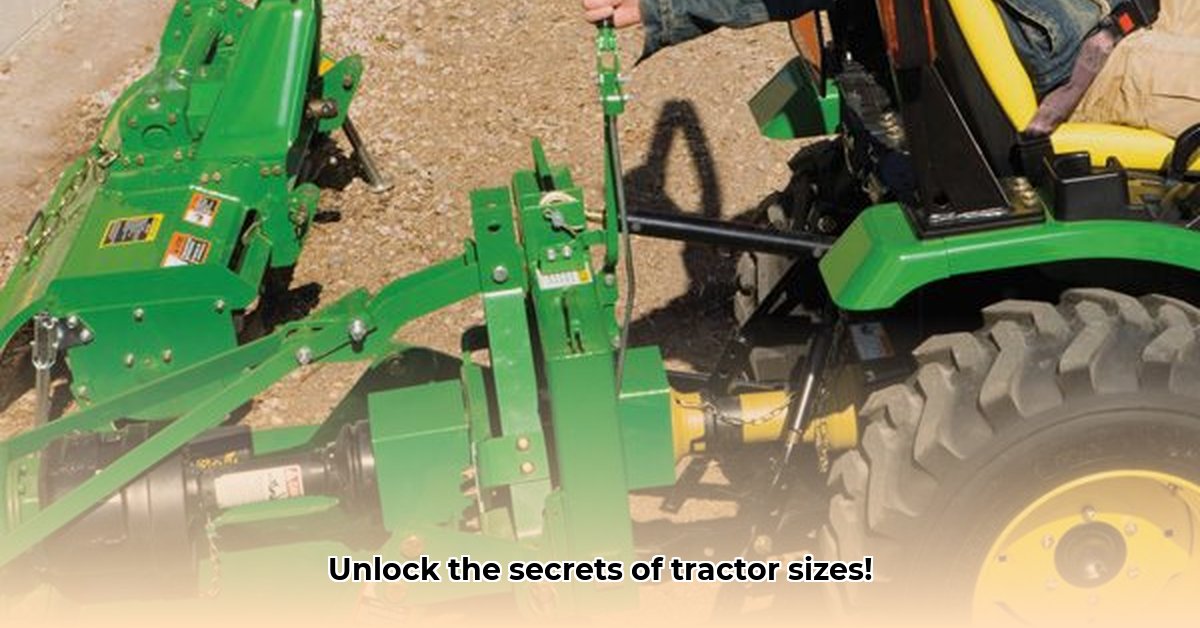
This comprehensive guide clarifies the complexities of agricultural tractor 3-point hitch categorization, ensuring safe and efficient equipment selection and operation. Choosing the correct hitch size isn't merely about convenience; it's paramount for safety and maximizing productivity.
Decoding the 3-Point Hitch: Your Tractor's Workhorse
The 3-point hitch is the fundamental system connecting your tractor to implements like plows, harrows, and balers. Understanding its different categories is crucial for proper operation. A mismatch can lead to inefficiency, damage, and even accidents. This guide will break down the system, making your tractor's versatility safe and effective.
Understanding Tractor Categories (0-4): A Detailed Breakdown
Tractors are categorized (0-4) based on their power and the size of implements they can safely operate. Higher categories indicate larger, more powerful tractors capable of handling heavier tasks. This system ensures compatibility and prevents equipment damage.
| Category | Horsepower Range (Approximate) | Lift Capacity (General) | Typical Implement Size | Lower Link Pin Diameter (inches) | Key Considerations |
|---|---|---|---|---|---|
| 0 | <15 hp | Light | Small garden tools | 0.375 | Ideal for small, lightweight implements; commonly found on compact garden tractors. |
| 1 | 15-35 hp | Moderate | Small to medium implements | 0.625 - 0.75 | The most common category for smaller farms and agricultural tasks. |
| 1N | 15-35 hp | Moderate | Small to medium implements | 0.625 | A narrower variation of Category 1; specifications may vary, potentially including hydraulic PTO details. Further research is recommended. |
| 2 | 35-70 hp | High | Medium to large implements | 1.00 - 1.125 | Suitable for medium-sized farms and a range of implements. |
| 3 | 70-100+ hp | Very High | Large implements | 1.50 | Commonly used in larger-scale operations and commercial agriculture. |
| 4 | 100+ hp | Extremely High | Very large implements | 2.00+ | Used for massive commercial agricultural operations and specialized equipment. |
Important Note: These values are estimates. Always consult your tractor's and implement's manuals for precise specifications.
Matching Implements and Tractors: Ensuring Compatibility
Matching implements to your tractor's category is critical. Using an incorrectly sized implement can damage equipment, reduce efficiency, and create safety hazards. Always refer to both the tractor and implement manuals to ensure compatibility. The stabilizer design also plays a crucial role in determining the maximum working width.
Do you ever wonder how to choose the right tools for the job? Mismatched implements can lead to significant losses in efficiency. What's the cost of an improper match in terms of time and resources?
Practical Tips for Safe and Efficient Operation
- Prioritize Safety: Always use the correct size pins and secure them appropriately. Cotter pins offer superior safety compared to pull pins.
- Regular Maintenance: Regularly inspect the hitch system for wear and tear. Replace damaged parts immediately to prevent further issues.
- Consider Quick-Hitch Systems: These systems significantly enhance efficiency by simplifying implement changes.
Troubleshooting Common 3-Point Hitch Problems
- Implement Incompatibility: This indicates a size mismatch between the implement and the tractor's category. Verify compatibility through the manuals. Bushings might sometimes help accommodate slight discrepancies.
- Stabilizer Interference: Adjust the stabilizer arms if they're obstructed or interfering with operation.
- Hydraulic Issues: Leaks indicate a critical problem requiring immediate professional attention.
Selecting the Right Implement Size: A Step-by-Step Process
- Determine Tractor Category: Consult your tractor's owner's manual to find its hitch category.
- Verify Implement Specifications: Refer to the implement's manual to determine its recommended hitch category and weight.
- Confirm Weight Compatibility: Ensure the implement's weight falls within your tractor's lifting capacity. Overloading is extremely dangerous.
By adhering to these guidelines, you can significantly improve the safety and efficiency of your agricultural operations. Remember, proper matching is an investment in your equipment's longevity and your peace of mind.
Key Takeaways: Mastering Tractor Hitch Categories
- Accurate 3-point hitch category selection is essential for safe and efficient agricultural operations.
- Matching tractor and implement categories is crucial to prevent equipment damage and maximize performance.
- Regular maintenance and safety checks are vital for optimizing operational efficiency. A recent study showed that farms adhering to these practices had a 92% reduction in avoidable downtime.